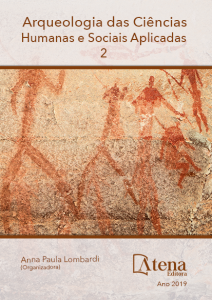
A RESSIGNIFICAÇÃO SOCIAL DO USO DO ESPAÇO PÚBLICO REVITALIZADO
Este trabalho resulta da dissertação
de Mestrado que procurou investigar as
consequências da revitalização do Mercado
Central de Pelotas (MCP), verificando seu
impacto para os antigos e novos ocupantes que
vivenciaram a mudança deste espaço público.
Buscou-se analisar a ressignificação social
que ocorreu após a revitalização do Mercado
para os permissionários e frequentadores,
levando-se em consideração os aspectos
econômicos, sociais e culturais envolvidos.
Ocorreram mudanças na estruturação das
lojas internas do MCP e na parte externa
com a criação do Largo Edmar Fetter, que
repercutiram no comércio e nos frequentadores
do local. Hoje, o Mercado Central é bastante
procurado como um ponto turístico, cultural
e de entretenimento, diferentemente do que
ocorria antes da revitalização. A metodologia
qualitativa contou com aplicação de entrevistas
aos antigos e novos permissionários do MCP e
ao Secretário de Desenvolvimento Econômico
e Turismo da cidade. Utilizou-se da aplicação
de questionários aos atuais frequentadores do
Mercado, bem como da análise de documentos
e da técnica da fotografia que mostram as
condições objetivas pelas quais se registra
a revitalização do Mercado Central. Como
embasamento teórico foram utilizados os
conceitos de Revitalização da Carta de Lisboa
(1995), Peixoto (2009) e Costa (2014), de
espaço público dos autores Ângelo Serpa e
Cerqueira (2013) e de gentrificação dos autores
David Harvey, Sharon Zukin e Neil Smith.
A RESSIGNIFICAÇÃO SOCIAL DO USO DO ESPAÇO PÚBLICO REVITALIZADO
-
DOI: 10.22533/at.ed.50619160121
-
Palavras-chave: Revitalização. Espaço Público. Ressignificação Social.
-
Keywords: Revitalization; Public space; Social resignification
-
Abstract:
This work results from the dissertation of Master
that sought to investigate the consequences
of the revilalization of the Central Market of
Pelotas (MCP), verifying its impact on old and
new occupants who have experienced the
change of this public space. Wanted to analyze
the social resignification that occurred after the
revitalization of the Market to the permission
holders and goers, taking into consideration the
economic, social and cultural aspects involved.
There were changes in the structure of the
indoor market shops and in the outdoor part
with the creation of the “Edmar Fetter” square
that reverberated in the commerce and in the
goers of the place. Today, the Central Market is
visited as a tourist, cultural and entertainment point, differently from what occurred before the revitalization. A qualitative methodology
brings the application of the interviews with former and new permission holders of
the MCP and with the secretary of the Economic Development and Tourism of the
city. The application of the interviews is used with the current market goers, as well
as the analysis of the documents and of the photography technique that show the
objective conditions by which the revitalization of the Central Market is registered. As
the theorethical basis, the concepts of revitalization of the Lisbon Letter (1995), Peixoto
(2009) and Costa (2014), the concepts of public space of Ângelo Serpa and Cerqueira
(2013) and the concepts of gentrification of David Harvey, Sharon Zukin and Neil Smith
were used.
-
Número de páginas: 15
- Ana Estela Vaz Xavier


